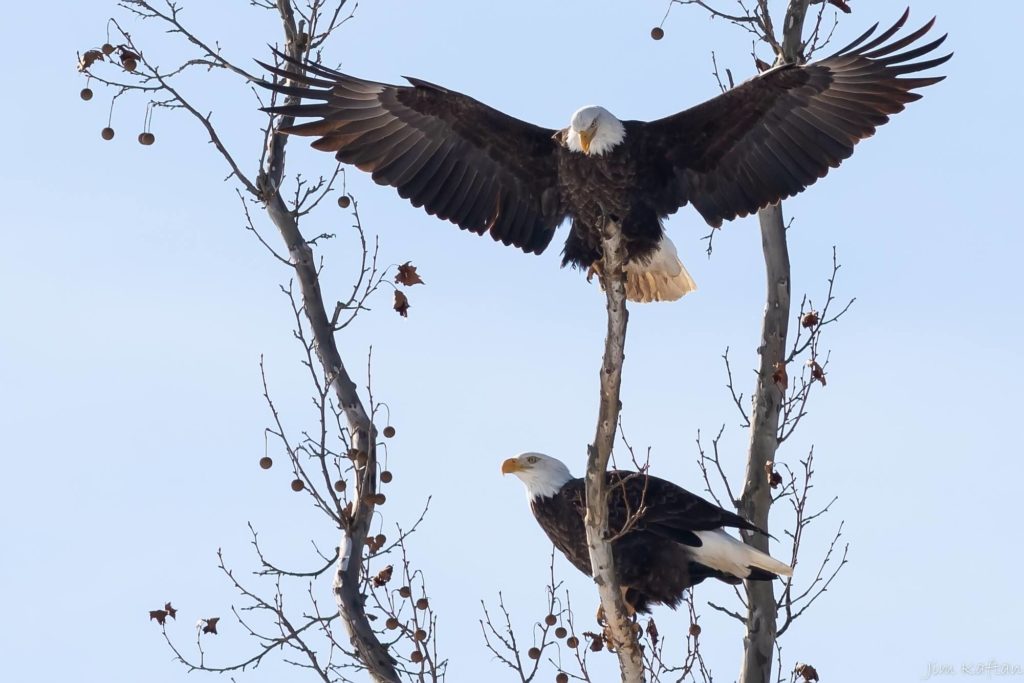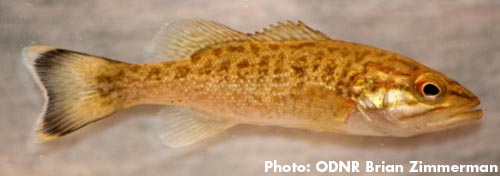It’s officially June, which means we are in full celebration mode! Fifty years ago on June 22, the Cuyahoga River burned for the very last time, serving as a catalyst for the environmental movement. Today, we’re lucky to be able to reap the benefits of the massive cleanup that followed.
While there is still work to do, the river has come a long way in the past several decades. Where toxic chemicals once oozed, you can now see fish, birds, and other wildlife.
Let’s take a look at the hidden gems of our own “crooked river.”
Bald Eagles

For proof that the Cuyahoga River ecosystem is getting healthier, look up! High overhead in a big tree near Pinery Narrows is a bald eagle nest. After being gone from Cuyahoga County for 70 years, nesting bald eagles are back. Since 2006 a pair has built a nest every year. The pair in 2007 raised the first eaglet youngster!
In 1975, bald eagles were almost completely absent from Ohio, with only four breeding pairs in the entire state. Today, however, bald eagles are a regular and spectacular sight in the park, eating fish directly from the waters of the Cuyahoga River — a good sign that it’s cleaner!
Smallmouth Bass
Today, dozens of species of fish swim in the river’s waters, and even fish that can only live in clean water, like steelhead trout and northern pike, have returned.
As a high-level freshwater predator with low tolerance for pollution, the native smallmouth bass is a great indicator of environmental health in the Cuyahoga River.

As they eat smaller fish that are lower on the food chain, smallmouth bass can accumulate many toxins, making them more likely to die off when pollution is heavy. Today, however, smallmouth bass are common in the Cuyahoga River, indicating that pollution levels are dropping. These elusive and feisty fish can be frequently found in cooler areas of the river, hiding in the cool shadows of rocky outcroppings or fallen trees.
River Otters
The park’s most charismatic creatures are undoubtedly the playful river otters. After a long absence, river otters have returned Cuyahoga Valley National Park to make their home once more.

Once plentiful in Ohio, native river otters had disappeared by the early 1900s. In 1986, the Ohio Division of Wildlife began reintroducing the otter to several major Ohio rivers. In 2002, they were removed from the state endangered species list and can now be found throughout northeastern Ohio, including in CVNP.
River otters require very high-quality water conditions, so their return is indicative of the growing health of the Cuyahoga River and its tributaries. You’re mostly likely to spot a river otter off of the river in the Beaver Marsh or in a smaller tributary, but you might be able to see one in the river if you look closely.
50th Anniversary Celebration

The health of the Cuyahoga River is critical to the success of all of these species. The river is still a long way from being a pristine resource, but we’re confident that it will only continue to improve in the years to come.
This month, we are joining the community in celebrating the anniversary of the last time the river burned, and the 50 years of water renewal that followed. The Conservancy is excited to commemorate the anniversary with our signature event: an evening of NeoSoul and Jazz on the river featuring Grammy Award nominee Eric Roberson!
We look forward to seeing you there!





